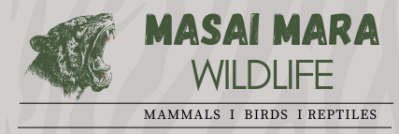- Common Name: Side-striped Jackal
- Scientific Name: Canis adustus
- Swahili Name: Bweha miraba
- Maasai Name: Embarie
- Size:
- Head-Body Length (HBT): 125 cm (49 inches)
- Shoulder Height (SH): 40 cm (16 inches)
- Gestation: 8–10 weeks
- Recognition: The Side-striped Jackal is similar in size to the Black-backed Jackal, but it can be distinguished by a clearly defined white stripe along its flanks, usually edged with black. It also has a bushier, white-tipped tail and smaller ears compared to its cousin. This subtle but striking coloration makes it easier to identify in the wild.
Habits and Behavior
- Nocturnal and Elusive: Side-striped Jackals are most active during the night and cooler parts of the day, avoiding the heat by seeking shelter in cover. Unlike the more commonly seen Black-backed Jackal, the Side-striped Jackal is less frequently encountered and is somewhat more elusive. This nocturnal behavior contributes to its relative scarcity in sightings, although it is likely more widespread than previously thought.
- Omnivorous but Less Predatory: The Side-striped Jackal is an omnivore with a wide-ranging diet that includes fruits, invertebrates, small mammals, and birds. However, it is generally less predatory than the Black-backed Jackal, showing a preference for scavenging over hunting live prey. While it is less likely to chase down adult antelope, it will opportunistically target newborn antelope hidden in the grass.
- Vocalizations and Communication: Unlike the noisier Black-backed Jackal, the Side-striped Jackal tends to be quieter, with calls that consist of soft hoots and a stuttered series of yaps. These vocalizations are primarily used for communication between mates and to mark territory. Despite being less vocal, it is equally effective at establishing and defending its territory.
Social Structure
- Monogamous Pairs: Similar to other jackal species, Side-striped Jackals form lifelong monogamous pairs. Together, they defend their territory from intruders, marking boundaries with urine and feces. The pair will den in abandoned burrows, where they raise their young. Each litter typically consists of 2–6 pups, and the birth of the pups is timed to coincide with seasonal food availability, such as the Wildebeest calving season.
- Helpers and Family Dynamics: In some cases, older offspring may stay behind to assist their parents in raising the next litter. These ‘helpers’ contribute to the care and protection of the pups, enhancing the survival rates of the young in an environment full of larger predators.
Habitat
- Where to Find: The Side-striped Jackal is found in a variety of habitats in the Masai Mara, preferring wooded savannas, mixed grasslands, and forest edges. Although it is less visible than the Black-backed Jackal, it thrives in areas where there is sufficient cover to hide during the day and forage at night. The jackal avoids open plains where it is more vulnerable to predators.
Diet
- Feeds on: The Side-striped Jackal has an omnivorous diet, including fruits, invertebrates, small mammals, birds, and reptiles. Unlike its more aggressive relative, it is less inclined to chase down large prey and often scavenges for food or hunts smaller, easier targets like rodents or insects.
Conservation Status
- IUCN Status: Least Concern. The Side-striped Jackal is widespread across much of sub-Saharan Africa, including the Masai Mara. Its population remains stable, and it faces no major threats. However, habitat loss and human-wildlife conflict could potentially impact its future, particularly in regions where farmland encroaches on natural habitats. Their adaptability to various habitats, including those near human settlements, helps ensure their survival for now.
Unique Traits
- White Stripe Identification: The Side-striped Jackal’s most distinguishing feature is the white stripe along its flanks, making it easy to differentiate from the Black-backed Jackal, which lacks this marking. Its bushier, white-tipped tail and smaller ears also help with identification.
- Scavenger with Less Aggression: Unlike the Black-backed Jackal, which is more aggressive in its scavenging and hunting behavior, the Side-striped Jackal is a less predatory opportunist. This behavior allows it to coexist peacefully in areas where competition for food is high.
- Quieter Calls: With its softer vocalizations, the Side-striped Jackal is less vocal than other jackal species. Its calls are usually restricted to hoots and soft yaps, used for communication within the pack and to mark its territory.
Interesting Facts
- Helper Behavior: Young Side-striped Jackals often remain with their parents as helpers, contributing to the care of younger siblings. This cooperative behavior strengthens the family unit and increases the pups’ chances of survival.
- Elusiveness: Although less commonly seen than its Black-backed counterpart, the Side-striped Jackal is likely more common than realized, with its elusive nature making it easy to overlook.
In conclusion, the Side-striped Jackal is a fascinating and adaptable species in the Masai Mara, thriving in wooded savannas and mixed grasslands. Its unique appearance, omnivorous diet, and less aggressive behavior set it apart from other jackals. Although currently listed as Least Concern, ongoing conservation efforts to protect its habitat will ensure that this enigmatic and lesser-seen jackal continues to thrive.
